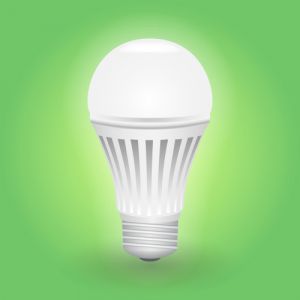It may seem straightforward to some, but to others, the different types of lightbulbs available at your local Coles or Woolies can be a bit of a head-scratcher. LEDs have copped some praise over the years for their general efficiency, but since they’re not the only kid on the block, it may not be clear where they stand in comparison to others. We’re here to tell you all you need to know about LED light bulbs, so let’s get started.
What are LED light bulbs and how do they work?

LED stands for light-emitting diode. As mentioned before, LEDs in general are known for their energy efficiency and longevity. Since LED light bulbs are best explained in comparison to other sources of light, that’s exactly what we’ll do.
In contrast with incandescent, CFL and halogen light bulbs, LEDs last longer and are more durable, due to the fact that they don’t have any fragile pieces such as glass tubes in them. Not only that, but since they don’t contain any mercury or lead, they’re generally considered much safer, too.
They may not be the cheapest option in the store, but more often than not value will be revived by how little they cost to run in comparison to other types of bulbs. That works out to decent savings if you have quite a few in your home!
How much do LEDs cost?
According to Energy Rating, LED light bulbs cost an average of $4 a year in power costs for the average home. In contrast, a household of halogen bulbs compared to LEDs will likely set the same home more than $250 extra a year.
As far as retail value goes, LED light bulbs will set you back anywhere between $3 and $10 in your local supermarket. Pricing generally depends on the size of the bulb and lumens.
LED vs CFL light bulbs
Two common household light bulb types, the CFL bulb and LEDs, go head to head in this comparison. This table compares the bulbs based on energy efficiency, longevity and more.
| LED light bulbs | CFL light bulbs |
|---|---|
|
|
Source: Energyrating.gov.au
What types of LED light bulbs can you get?
There are more types and shapes of lightbulbs to count on two hands, and LEDs aren’t exempted from this. Once you’ve decided that LED is the right fit for you, you’ll need to pick a shape, decide how bright you want your bulb to be and select the appropriate fitting for your lamp.
- Choose a shape: For the most part, light bulb shapes don’t make a huge difference, so you’re up to choose something in a style you prefer. Globe light bulbs, for instance, have grown in popularity in recent years for their raw, industrial look.
- Decide temperature and how bright: The brightness of lights in general is measured in lumens. The higher the lumens, the brighter the light. In your supermarket, you’ll typically see lumens between 450 and 1,400 lumens, with cool or warm attached to the label.
- Select a fitting: This is the part to watch out for- choose the wrong fitting and you’ll go nowhere with your bulb. Make sure to check what kind of fitting your light source requires before going into the store.
How bright are LED lights?
It’s hard to say how ‘bright’ something is necessarily because, as mentioned above, the brightness of any light bulb will depend on its lumens. Where wattage was once used as an indicator for a bulb’s brightness, it’s no longer relevant, as LED bulbs with the same wattage as other bulbs are consistently brighter than their counterparts. For this reason, LEDs of the same brightness become less expensive than halogens or CFLs, as they use up less wattage.
Are LED lights environmentally friendly?
As far as light bulbs come, LEDs are generally the eco-friendliest. This is because they consume the least amount of power when compared to incandescent, halogen and CFL bulbs, meaning they’re more energy efficient.
Image credits: Chones/shutterstock.com, GenerationClash/shutterstock.com, Gaidamashchuk/shutterstock.com


Share this article